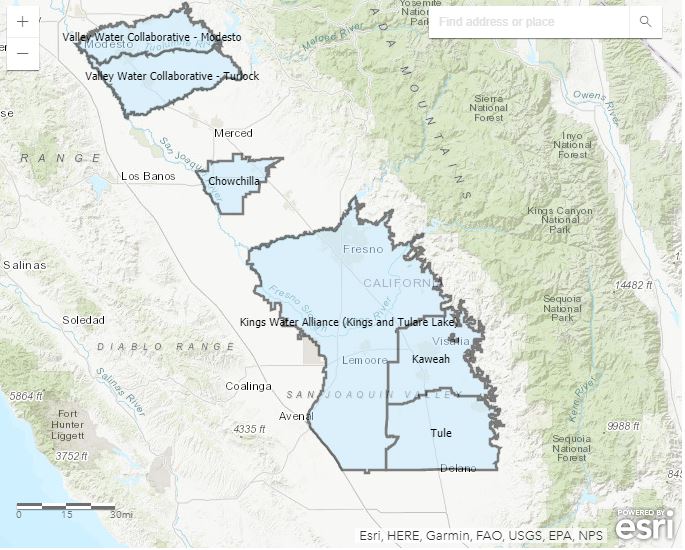- Correction: The nitrate control program is run by the Central Valley Regional Water Quality Control Board. An incorrect state agency was listed in the original version of this story.
After three years, more of the Central Valley is being folded into the state’s nitrate control program. But program managers and environmental justice advocates say there are still serious problems with outreach.
The state’s nitrate control program launched in 2021. It offers free well testing and water deliveries for residents whose wells test over the limit for nitrates. The program is mandated by the Central Valley Regional Water Quality Control Board and funded by nitrate polluters throughout the valley.
Nitrates can be harmful to pregnant women and infants. Nitrates have infiltrated drinking water supplies in the valley from farming fertilizers, septic tanks, dairies and other wastewater sources.
The first phase of the program included creation of five management zones covering the most polluted regions. Those zones cover a large portion of the southern San Joaquin Valley from Fresno County to the northern part of Kern County, a chunk in the mid-valley around Chowchilla and another large section further north covering the Modesto and Turlock areas.
State staff announced on Monday the program will be expanding “priority 2” areas which includes the Delta-Mendota, Eastern San Joaquin, Madera, Merced, Tulare Lake, Yolo, Kern County (Poso) and Kern County (West-side south) subbasins. State staff mailed out 938 notices to comply to nitrate polluters in those areas.
It will still take a while before well testing and water deliveries begin. Polluters and program managers have a year to develop a plan before they must start testing and providing replacement water.
But the program has been moving too slowly, advocates say.
“It’s still pretty lacking,” said Kija Rivers, policy advocate for nonprofit Community Water Center. “There are thousands of households who are impacted by nitrate contamination, yet only a fraction of those families have had their wells tested by the management zones.”
According to the program’s website, 1,273 households are receiving bottled water through the program. Just over 2,000 wells have been tested since the program’s start in 2021. But according to a report commissioned by the Community Water Center, more than 5,000 wells are at the highest risk of nitrate contamination in the valley.
One of the biggest barriers is public outreach and trust.
“Outreach has been unsuccessful,” said Rivers. “It comes with building relationships and trust within the community.”
Program managers reiterated the challenge of building trust.
“It’s so frustrating for us because we’re trying as hard as we can,” said Parry Klassen, executive director of the Valley Water Collaborative which covers the Modesto and Turlock areas for the program and will also oversee the Merced and Delta-Mendota subbasins. “The perception out there is that if the state’s involved, they don’t want to have anything to do with it. And it’s very disappointing.”
Many people don’t trust the program, said Klassen. Two of the Collaborative’s staff canvassed 1,000 homes for the program. Out of 600 people who answered the door the organization only received 15 applications, said Klassen.
Staff are trying a new method now. The collaborative is offering $50 to its current participants for every person they refer to the program if they agree to have their well tested. So far they’ve paid out about $1,000, said Klassen.
Still, it will potentially benefit more households once the program expands.
“We’re glad that the priority two management zones will be expanding their support in areas of the valley,” said Rivers. “However, the support for residents that have nitrate contamination in the priority one areas is still lacking. So efforts still need to be focused in those areas.”
Share this:
- Click to share on Facebook (Opens in new window)
- Click to share on Twitter (Opens in new window)
- Click to share on LinkedIn (Opens in new window)
- Click to share on Reddit (Opens in new window)
- Click to share on Tumblr (Opens in new window)
- Click to share on Pinterest (Opens in new window)
- Click to share on Pocket (Opens in new window)
- Click to share on Telegram (Opens in new window)
- Click to share on WhatsApp (Opens in new window)
- Click to print (Opens in new window)








